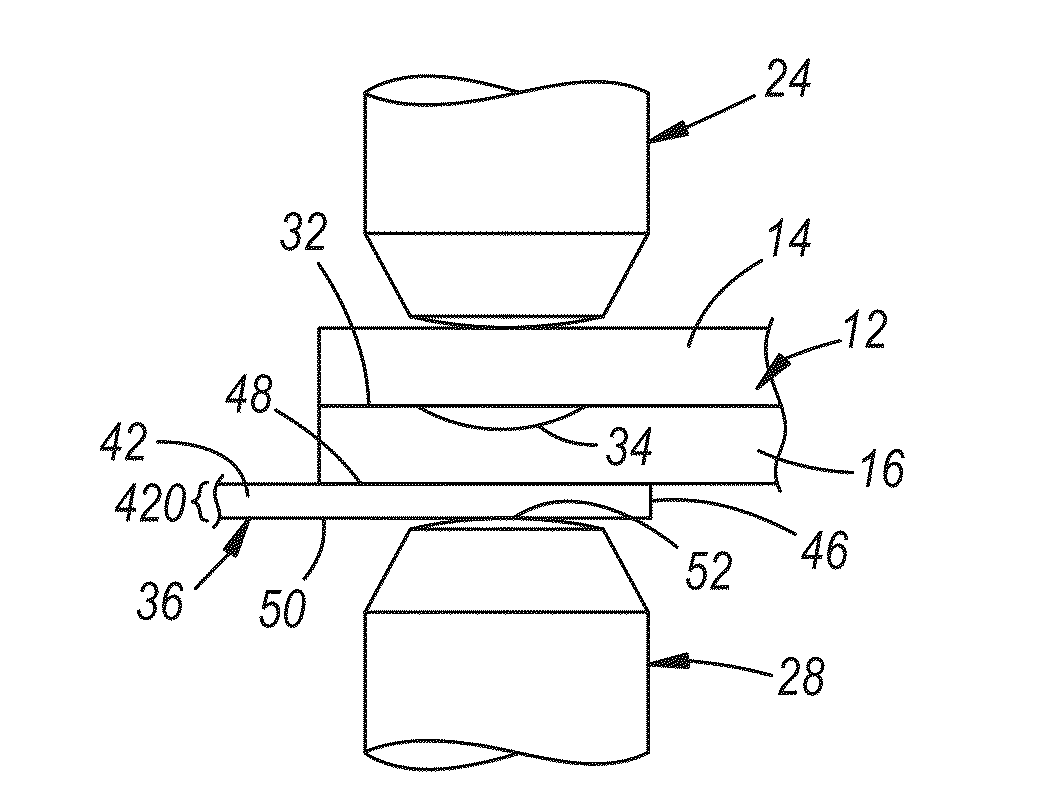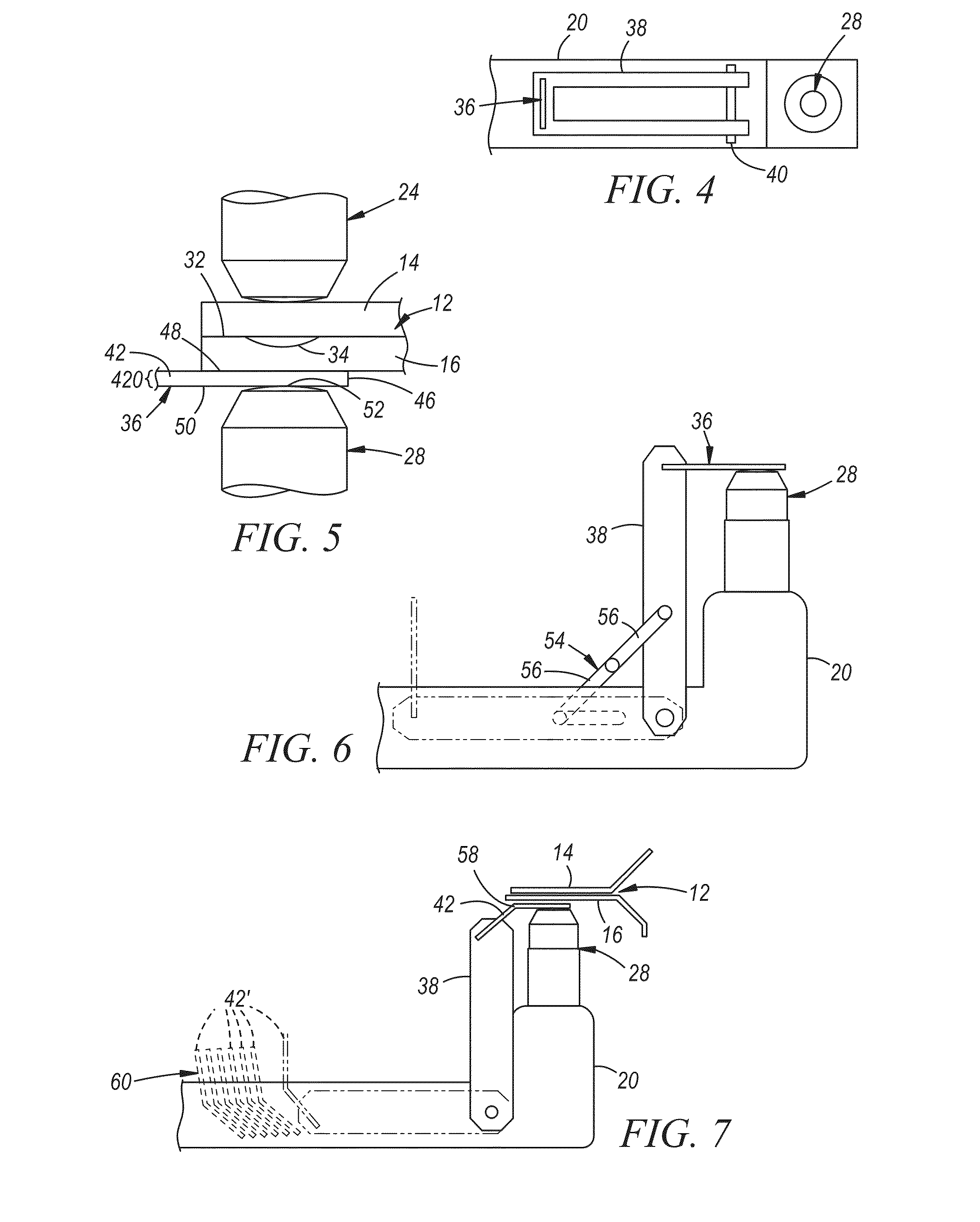Resistance spot welding steel and aluminum workpieces using insertable cover
a technology of resisting spot welding and workpieces, which is applied in the direction of welding/soldering/cutting articles, electrode supporting devices, manufacturing tools, etc., to achieve the effects of reducing manufacturing costs, slowing down production, and expanding production flexibility
- Summary
- Abstract
- Description
- Claims
- Application Information
AI Technical Summary
Benefits of technology
Problems solved by technology
Method used
Image
Examples
Embodiment Construction
[0022]The methods and assemblies detailed in this description resolve several challenges encountered when resistance spot welding a workpiece stack-up that includes an aluminum workpiece and a steel workpiece. Though described in more detail below, in general the methods and assemblies described can alter the solidification behavior of a created molten aluminum weld pool and thereby limit or altogether preclude the accumulation of defects at and along the faying interface of the aluminum and steel workpieces. The methods and assemblies can also minimize the size and thickness of Fe—Al intermetallic layer(s) formed at the faying interface. Of course, other improvements are possible. Taken together or alone, these measures help maintain suitable peel strength of the weld joint formed between the aluminum and steel workpieces, and help ensure the overall strength and integrity of the joint. And while the methods and welding electrodes are described below in the context of vehicle body ...
PUM
| Property | Measurement | Unit |
|---|---|---|
| thickness | aaaaa | aaaaa |
| thickness | aaaaa | aaaaa |
| thickness | aaaaa | aaaaa |
Abstract
Description
Claims
Application Information
 Login to View More
Login to View More - R&D
- Intellectual Property
- Life Sciences
- Materials
- Tech Scout
- Unparalleled Data Quality
- Higher Quality Content
- 60% Fewer Hallucinations
Browse by: Latest US Patents, China's latest patents, Technical Efficacy Thesaurus, Application Domain, Technology Topic, Popular Technical Reports.
© 2025 PatSnap. All rights reserved.Legal|Privacy policy|Modern Slavery Act Transparency Statement|Sitemap|About US| Contact US: help@patsnap.com



